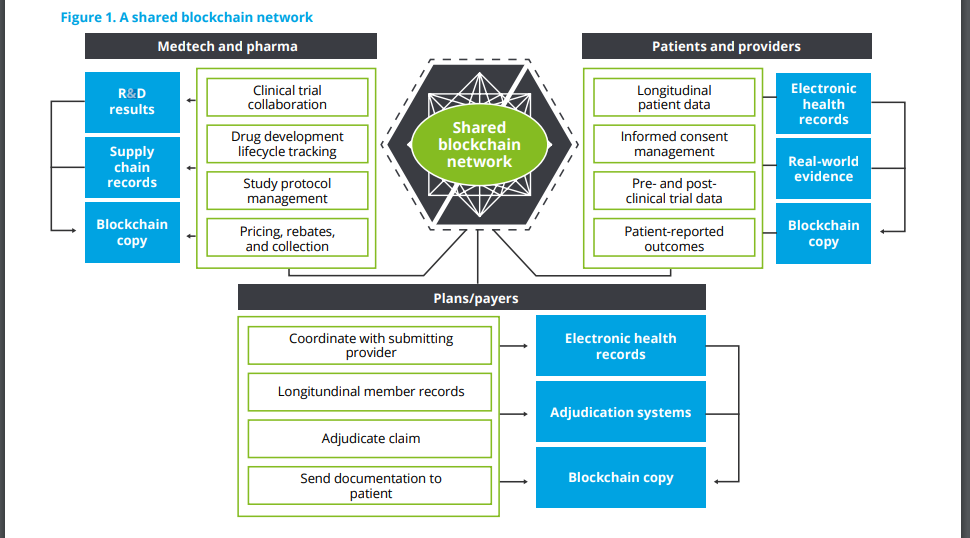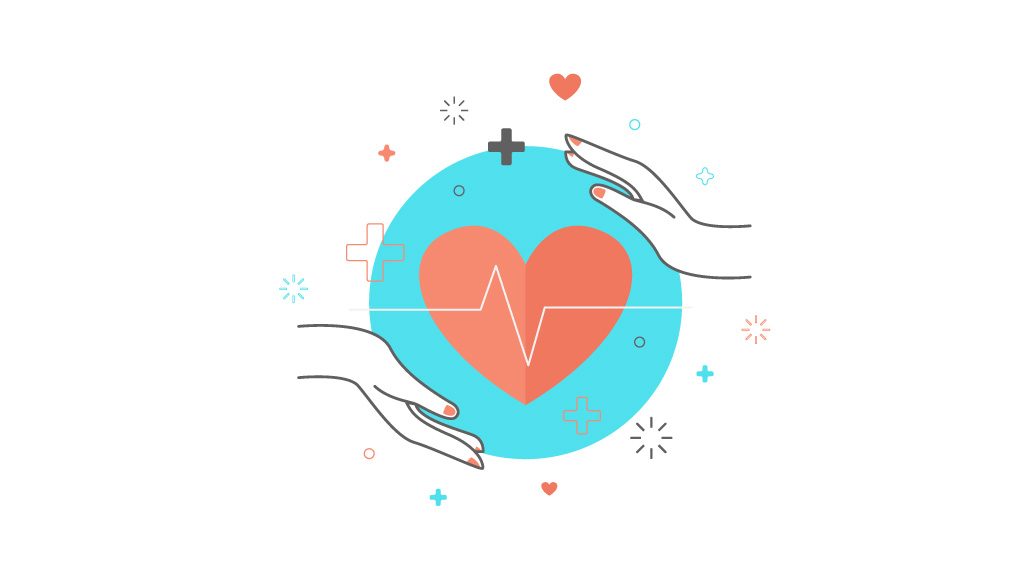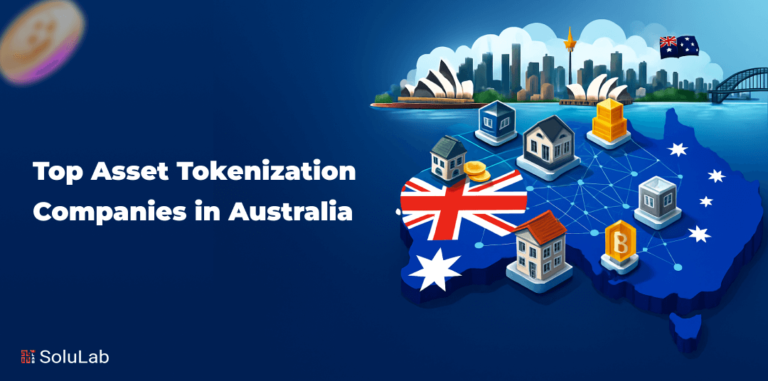Blockchain: For life sciences and healthcare - What broader integration is making possible today
Blockchain is essentially a living list of linked digital records—a distributed ledger—that permanently stores updates via a consensus among those who share it. A record of every transaction is embedded in the information itself, without the need for a central repository. While information can be added, it cannot be copied or deleted. As a result, multiple groups—life sciences companies, health plans, physicians, hospital systems, and even patients for e.g. can add to and share information through a secure system.
Today, blockchain is garnering headlines once again, this time for the vast ecosystem of cross-industry use cases emerging around it.
For e.g.
- Europe’s largest shipping port has launched a research lab to explore the technology’s applications in logistics
- Utilities in North America and Europe are using blockchain to trade energy futures and manage billing at electric vehicle charging stations
- Blockchain is disrupting social media by giving users an opportunity to own and control their images and content.
The shift from blockchain to blockchains—to networks of networks—is particularly compelling in life sciences and health care where the distinct sectors work together in one broadly interdependent ecosystem.
So what are the possibilities within life sciences and health care?
For life sciences and health care, blockchain has the potential to enhance collaboration, trust, interoperability, traceability, and auditability across a range of functions such as clinical
trials, supply chain management, financial transactions, credentialing, and claims processing. The shift from blockchain to blockchains—to networks of networks—is particularly compelling in life sciences and health care where the distinct sectors work together in one broadly interdependent ecosystem
A number of working groups are examining blockchain’s potential in areas such as counterfeit drugs, licensure, and technical knowledge sharing. As the technology unfolds, it could help in below areas of healthcare to solve problems:
- Address legacy technology debt
- Shorten negotiation cycles
- Improve medical record centralization
- Improve network coordination
- Clarify drug traceability
- Make clinical trial processes more consistent.
Prospects by sector
A shared network that links medtech and pharma, patients and providers, and plans and payers on the same standard could touch every part of the industry from drug trials to claims adjudication to clinical outcomes. For now, however, the challenges and the opportunities are worth exploring sector by sector.
Blockchain for Health Care Service Providers:
- Blockchain offers the potential to address poor network communication and a scattered view of transactions in the provider arena.
- It can also provide a bulwark against fraud and abuse.
- With fluent collaboration not only within but across networks, and visibility into patient transactions and measurable outcomes, blockchain may be a key element in the implementation of value-based care.
- For providers, who rely on insurance-related transactions but don’t own the processes behind them, blockchain may help reduce cost and inefficiency.
A shared network that links medtech and pharma, patients and providers, and plans and payers on the same standard could touch every part of the industry from drug trials to claims adjudication to clinical outcomes.
Blockchain in Life Sciences
- As in other sectors, blockchain in life sciences is in a nascent form. But storing and tracking critical data on a blockchain could reshape the sector.
- In clinical trials, blockchain could be a common frame of reference for an entire ecosystem of solutions that may improve participation and processes and ultimately lead to better health outcomes, with patients, investigators, managers, and doctors all touching different parts of the same ledger.
- A person’s cloud-based “health passport” could use blockchain to carry consistent information securely across the entire process of searching for relevant trials, matching criteria and registering, documenting consent, and participation.
- The same unbroken information chain could then support trial functions such as sample collection, tracking, and analysis.
- Many of the current systems used to track clinical trial samples and document proper storage, transport, and handling leverage spreadsheets that are hard to read or automate.
- Blockchain could help the data follow the samples, promoting more efficiency in the process and greater confidence in the results.
Blockchain for Healthcare Data Security
- For payers, blockchain could be used to help ensure the control, integrity, and traceability of data and serve as an essential tool for creating trust and reliability when sharing data across multiple parties.
- More specifically, blockchain could have a significant impact in areas such as medical records, claims processing, payments, provider data management, insurance design, and consent management.
- Broadly shared, consistent data on a blockchain might help health plans streamline administrative processes and combat fraud, waste, and abuse.
- Blockchain-based medical records and interoperability have been a focal point in streamlining patient-centric care management and delivery.
- Members want control of personal medical data and often are frustrated with the need to repeat data entry processes.
- This could be addressed by a customer-controlled blockchain for identity verification. While there is consensus around the longitudinal medical records use case, there has been some disagreement on how quickly this would happen. Challenges still exist around data protection and consumer incentives.

Challenges to overcome
-
Scalability
Many of the processes for blockchain would require more scalability and balance between permissionless blockchains (which offer more computing power) and permissioned ones (which offer faster processing).
-
Standardization
To foster greater efficiency and performance, organizations can consider implementing governance to control what type of data may be written into a blockchain.
-
Incentives
Blockchain participants should determine technical, financial, and business incentives that could encourage organizations to adopt the technology and lend their computing power.
-
Cost
Organizations need to determine their costs for operating a blockchain.
-
Regulatory
While a blockchain solution could address the Health Insurance Portability and Accountability Act (HIPAA) privacy rule in part by separating and encrypting PHI/PII data, regulatory bodies should consider deep collaboration with the industry to facilitate adoption.
Blockchain’s broad implementation in the life sciences and health care ecosystem will require a “tipping point” of trust and adoption among stakeholders, including patients.
Conclusion
Companies should look to standardize the technology, talent, and platforms that will drive future initiatives—and, after that, look to coordinate and integrate multiple blockchains working together across a value chain. An effective way to get started is by getting to know blockchain— the reality, not the hype:
- Dive deep into workshops and proofs of technology.
- When it’s time to launch the first pilot, define the use case in detail, and plan an iterative, agile way to deliver a measurable solution to an identified business challenge.
- Focus blockchain development resources on use cases with a clear path to commercialization.
- Support standardization in technology, business processes, and talent skill sets.
- Work to integrate and coordinate multiple blockchains within a value chain.





